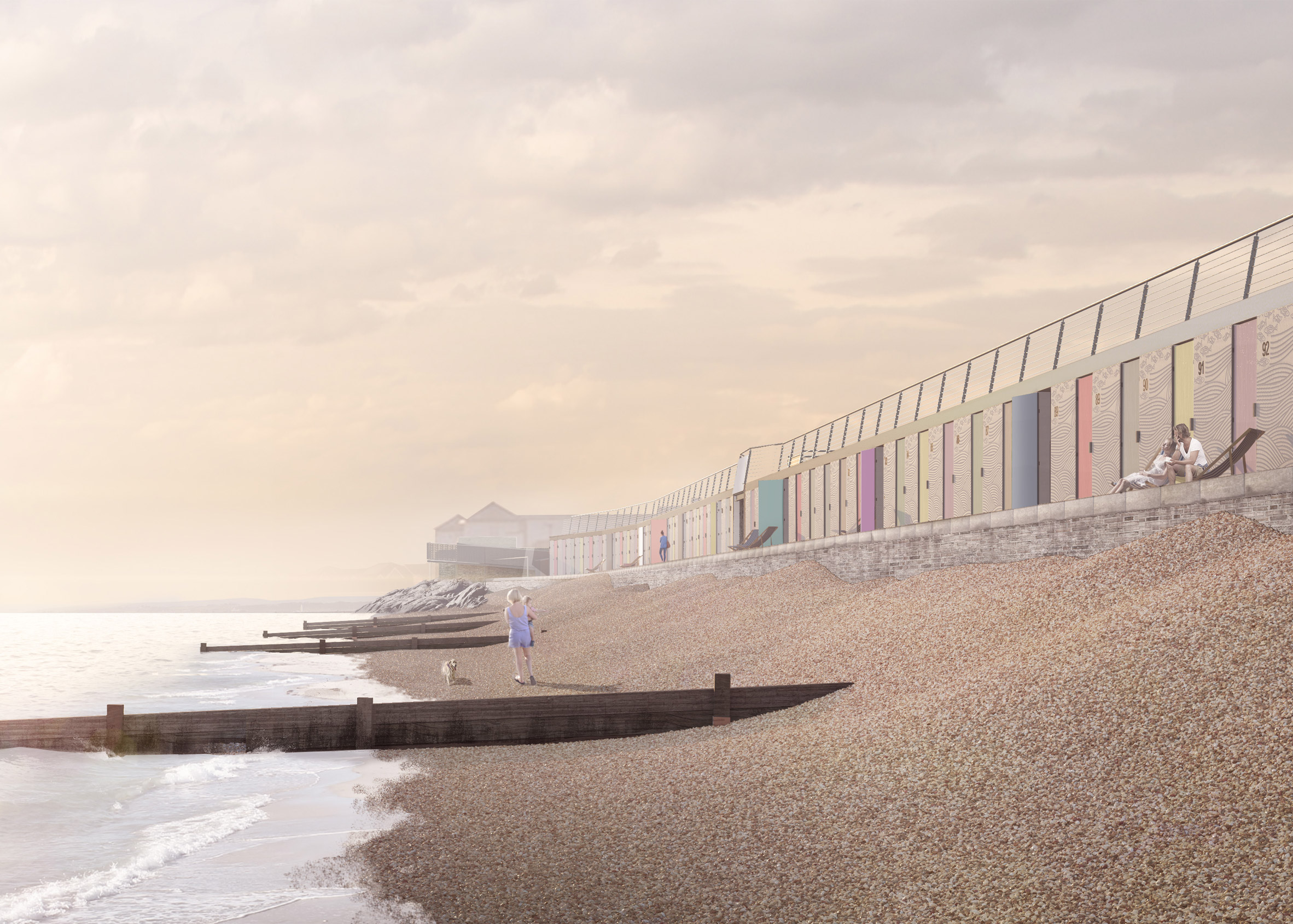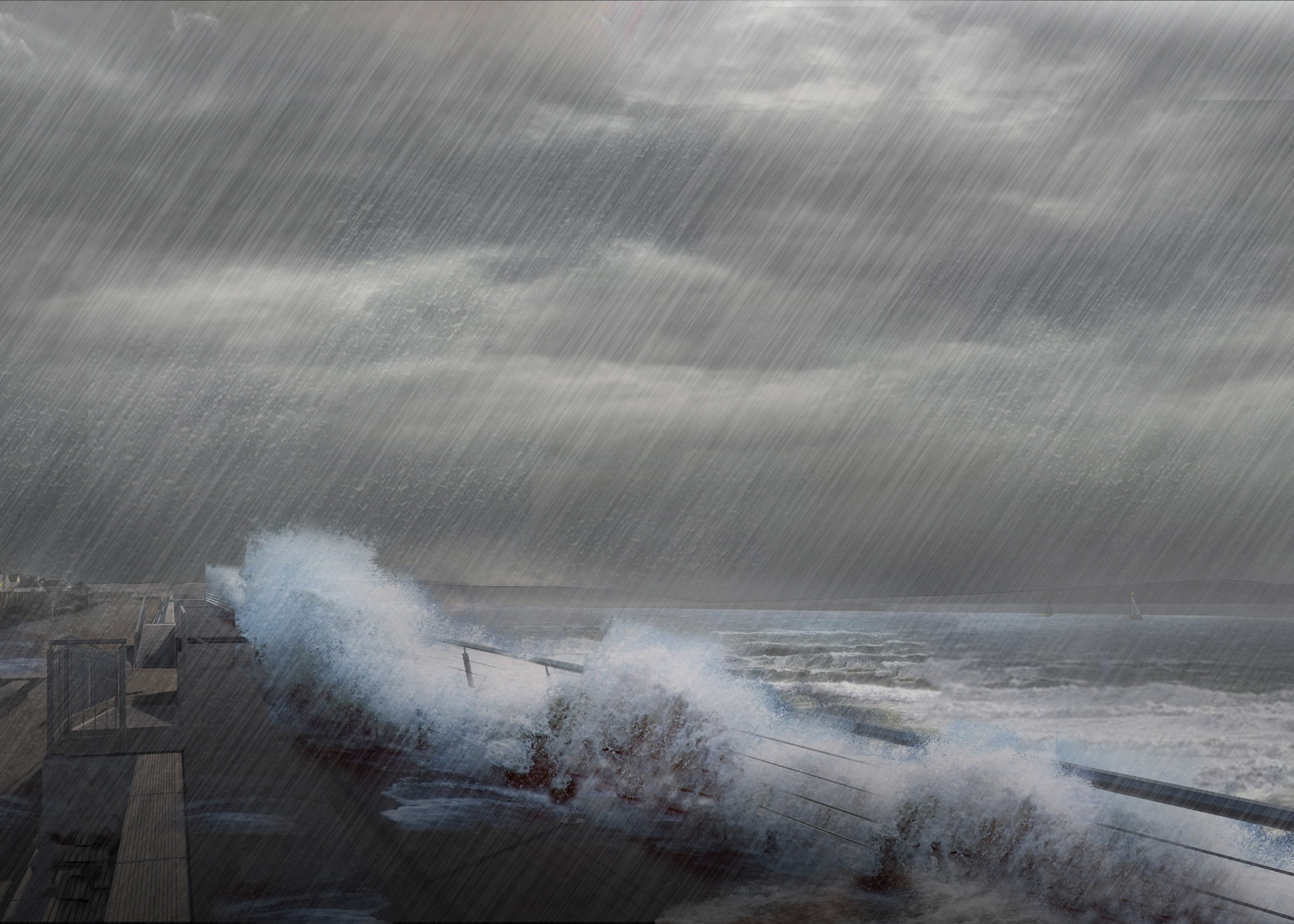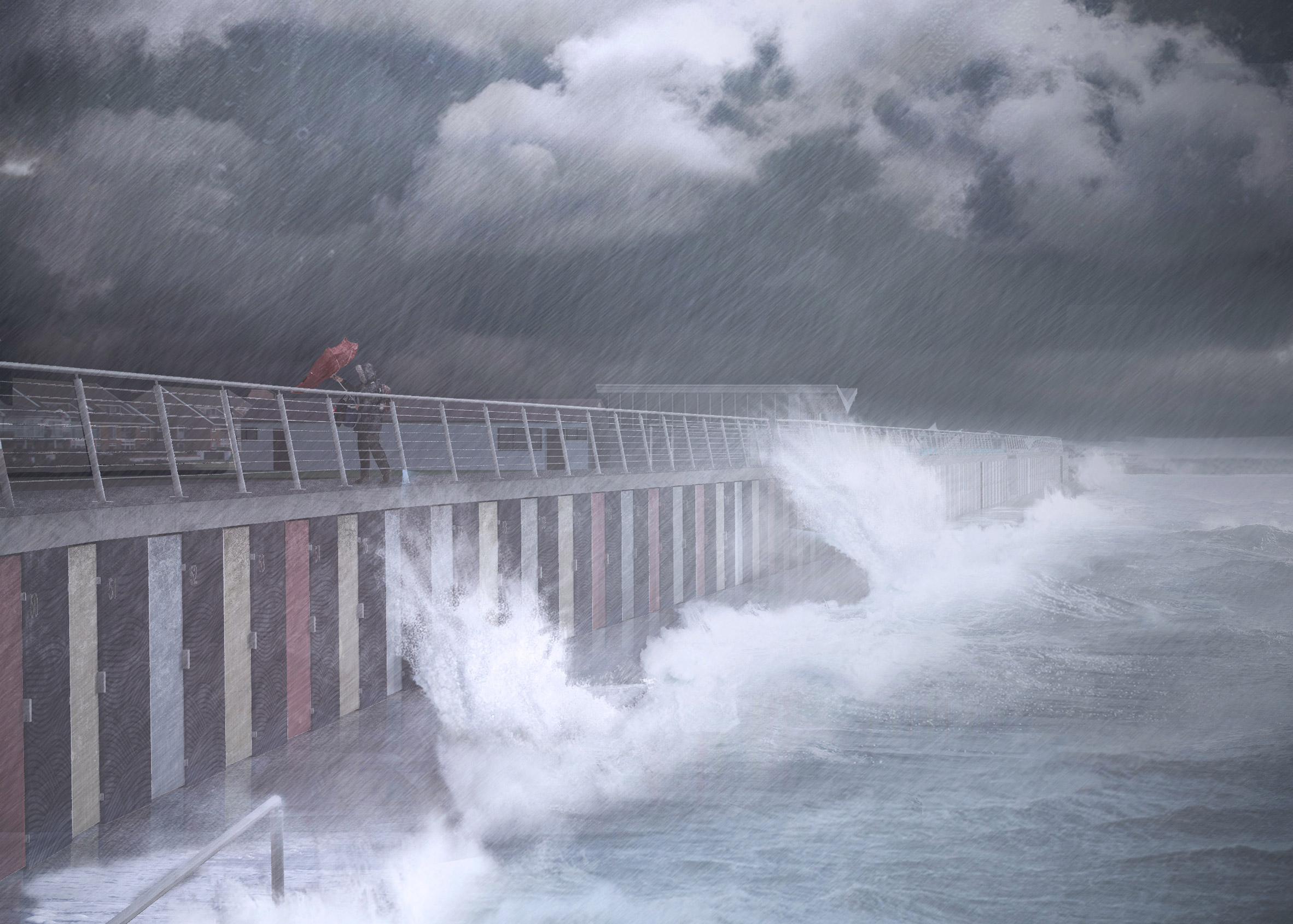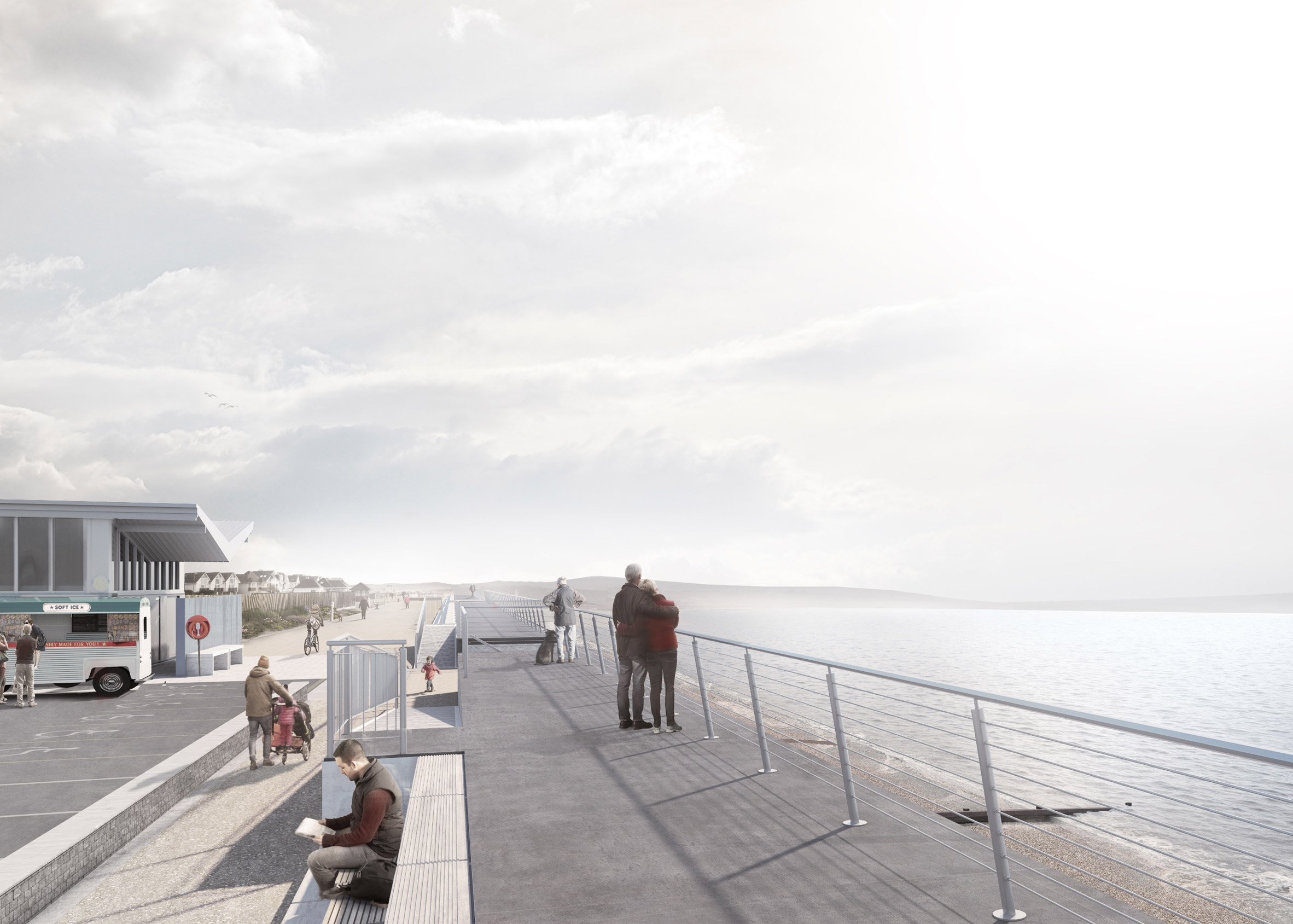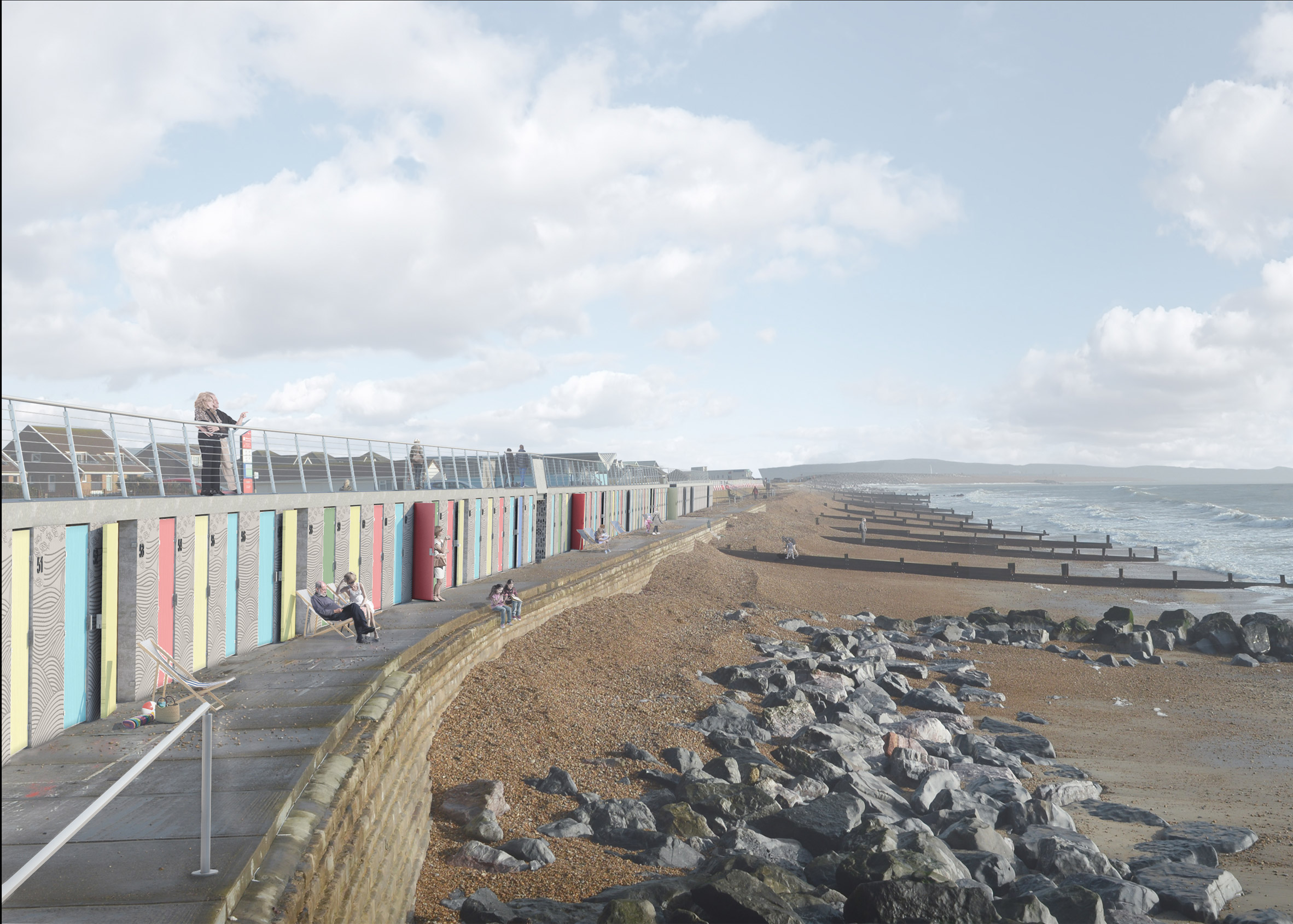A row of brightly coloured beach huts and an elevated promenade will be integrated into this sea wall designed by Snug Architects to protect the coastal English town of Milford-on-Sea (+ slideshow).
The Southampton-based studio collaborated with Ramboll engineers on the project, which will replace a row of beach huts destroyed by a severe storm in 2014 and improve the town's flood defences.
Titled Inhabited Sea Wall Milford-on-Sea Beach Huts, the project will stretch 300 metres along the seafront. They are designed to withstand a "perfect one-in-200-year storm event".
A promenade will run along the top of the structure, while 119 beach changing huts will be tucked below.
"In an age of rising sea levels the project demonstrates the potential for inhabiting England's sea defences," said the studio.
"To resist the storm event, the beach huts have become effectively architectural infrastructure serving as a sea wall, coastal defences, beach huts and raised viewing promenade for the general public."
The structure will be made from reinforced pre-cast concrete and feature decorative panels depicting local scenes.
"It is the intention for the front panels to illustrate and encourage visitors to explore other historic and ecological sites along the coast such as Hurst Castle, a 16th-century castle constructed by Henry the VIII, which is located two miles to the west of the beach huts," explained the studio.
End panels will feature relief artwork made using driftwood and other debris from the beach.
The £1.2 million scheme, commissioned by the New Forest District Council, is set to complete in 2017.
Typically colourful and arranged in a repetitive form, beach huts have been a prominent fixture at British seaside resorts since the 19th century.
Other attempts to redesign them include a mirrored structure in Sussex, a series of wheelchair-accessible cabins in Bournemouth and a set of colourful huts in Southend.

